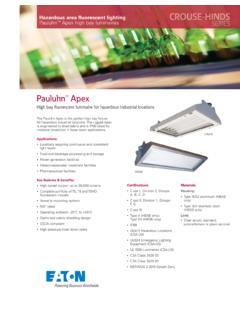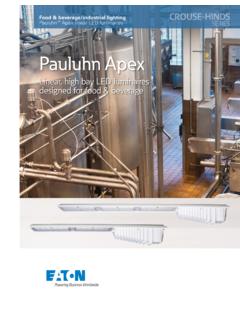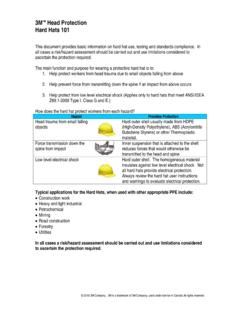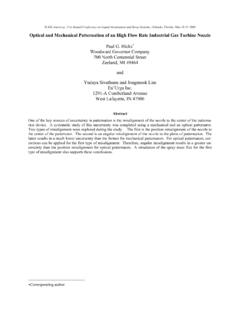Transcription of A simple electroporation method of green fluorescent ...
1 A simple electroporation method of green fluorescent protein-transfection and in vitro imaging of organ-cultured embryonic lingual tissue K. Yoshimura*1,T. Nashida2, M. Mikami3 and I. Kageyama1 1 Department of Anatomy, The Nippon Dental University School of Life Dentistry at Niigata, 1-8 Hamaura-cho, Niigata 951-8580, Japan 2 Department of Biochemistry, The Nippon Dental University School of Life Dentistry at Niigata, 1-8 Hamaura-cho, Niigata 951-8580, Japan 3 Department of Microbiology, The Nippon Dental University School of Life Dentistry at Niigata, 1-8 Hamaura-cho, Niigata 951-8580, Japan We aimed to establish a technique for efficiently transfecting embryonic organ-cultured lingual tissue using electroporation . To visually evaluate the transfection in the organ-cultured tissue, we use the constructed pCAGGS-eGFP vector, which expresses green fluorescent protein (GFP).
2 Transfection in rat embryonic lingual tissues was performed using the NEPA21 electroporation apparatus, after which the tissues were organ-cultured in reduced-serum culture medium. The NEPA21 programmable electroporation apparatus can apply two kinds of electric pulse, poring and transfer pulses, and each pulse is chargeable at both positive and negative polarities. We compared several parameters and observed differences in the resulting illumination among the transfected tissues. At 24, 48, and 72 h after transfection, we employed 447-nm single wavelength power LED illumination to observe lingual tissues under dark field on a stereo microscope. All of our experimental parameter configurations of poring pulse voltage, transfer pulse number, and transfer pulse voltage resulted in observable eGFP-transfected areas; however, a transfer pulse voltage of 20 V resulted in particularly strong fluorescence and the resulting transfected areas were seen on the entire part of the lingual body.
3 Keywords: GFP; electroporation ; organ culture; tongue, transfection 1. Introduction Transfection is the delivery of nucleonic acids or related synthesized molecules into tissues or cells and has applications for various biotechnologies. Generally, two kinds of nucleonic acid delivery methods are used for transfection: (1) viral transfection [1-7] and (2) non-viral methods of transfection that either physically or chemically create pores in the plasma membrane, subsequently allowing transfection of the target gene [8-18]. However, performing viral transfection methods is not easy because this technique requires pathogenic viruses and preexisting immunogenicity to the virus as well as the cytotoxicity of the virus are disadvantages of these methods [19]. Moreover, other non-viral methods, like lipofectamine-based transfection, may also have cytotoxicity [20].
4 Therefore, we choose the non-viral transfection method of electroporation for this study. There are several commercially available programmable electroporators and numerous configurable parameter patterns. However, there have been no reports regarding the transfection of lingual tissue using electroporation or the optimal transfection parameters for embryonic organ-cultured lingual tissue. The aim of this study was, therefore, to compare transfection parameters using the NEPA21 programmable electroporation apparatus and identify the optimal parameters of this apparatus in regards to the efficient in vitro electroporation of embryonic organ-cultured lingual tissue. 2. Materials and methods All of the procedures used in this study were approved by the Laboratory Animals Ethics Committee of The Nippon Dental University at Niigata.
5 Mandibles, including lingual tissue, were excised from male and female E16 rat embryos (Slc:Wistar/ST, SLC Japan Inc., Hamamatsu, Japan) and then transfected with a constructed pCAGGS-eGFP [21] vector in a final concentration of 1 g/ l diluted with Opti-MEM reduced serum culture medium (Life Technologies, Carlsbad, CA, USA) using the NEPA21 electroporation system (NEPAGENE, Chiba, Japan). Figures 1a c show our transfection system. Excised lingual tissues were placed in a bathtub-type electrode (NEPAGENE) and cooled on an ice pack during the electropotration process. Transfection parameters in the electroporation apparatus The NEPA21 programmable electroporator can employ two kinds of electric pulse (poring and transfer pulses), and each pulse can have either a positive only or a positive-to-negative polarity sequence (Fig.)
6 2a). Various parameters ( pulse voltage, number, interval, and decay) are configurable (Fig. 2b). In this study, we used the following parameters (Table 1): poring pulse voltage (experiment 1), transfer pulse number (experiment 2), and transfer pulse voltage (experiment 3). Microscopy and imaging science: practical approaches to applied research and education (A. M ndez-Vilas, Ed.)11_____ Fig. 1 The electroporation system. a) An overview of the system; A: bathtub-type electrode for electroporation , B: LED ring-illumination, C: emission filter-equipped stereomicroscope, D: digital camera, E: LCD Monitor, F: oscilloscope, G: NEPA21 electroporation system. b) Bathtub-type electrode for electroporation . c) Specimen placed a bathtub-type electrode.
7 AP: apex of the tongue, B: body (dorsum) of the tongue, POS: connected to the positive output, NEG: connected to the negative output. Organ-cultured tissue observation after transfection Following this transfection process, the tissues were subsequently cultured in an Opti-MEM culture medium with 95% O2:5% CO2. At 24, 48, and 72 h post-transfection, the green fluorescence of GFP expressed by the tissue was observed using the dark-field observation methods previously described by Chin-Sang et al. [22]. Observations were conducted on a Wild M3Z stereo microscope (Leica, Wetzler, Germany) equipped with a 515-nm long-pass filter (#54-653 VIS OG515, Edmund Optics, Barrington, IL, USA) (Figure 3). The illumination system used a 447-nm Luxeon V Star Royal Blue power-LED (Philips Lumileds, San Jose, USA) under a Roscolux excitation filter (#4290 CalColor 90 Blue, Rosco lab, Stanford, CA, USA).
8 At 24-, 48-, and 72-h intervals after transfection, dark-field images were captured with a Nikon Coolpix P6000 digital camera (Nikon, Tokyo, Japan) using a NY-P6000 joint adapter (MeCan, Saitama, Japan). a) b) Fig. 2 a) A sample electroporation pulse. The NEPA21 electroporation system can generate two kinds of controlled pulses: poring pulses (Pp) and transfer pulses (Tp). The output waves were attenuated using a 100:1 attenuator probe. 1 Div = V, 500 ms. b) Display panel of the NEPA21 programmable electroporation apparatus parameter settings. Detailed parameters are shown in Table 1.
9 Microscopy and imaging science: practical approaches to applied research and education (A. M ndez-Vilas, Ed.)12_____ Fig. 3 An overview of the image acquisition system using an LED illuminating device. A: Emission filter-equipped stereomicroscope, B: excitation filter-equipped high-power LED illumination device, C: protection filter (same as emission filter), D: culture wells containing organ-cultured specimens. Table 1 electroporation parameters used in this study. Experiment 1 Experiment 2 Experiment 3 Poring pulse (Pp) Pulse voltage (V) 175, 150, 125 175 175 Pulse width (ms) Pulse intervals (ms) 50 50 50 Pulse numbers 2 2 2 Pulse Decay from Pp#1 (%) 10 10 10 Polarity + => + => + => Transfer pulse (Tp) Pulse voltage (V) 20 20 20, 30, 40, 50 Pulse width (ms) 50 50 50 Pulse intervals (ms) 50 50 50 Pulse numbers 30 10, 20, 30, 40, 50 30 Pulse Decay (%) 40 40 40 Polarity + => + => + => 3.
10 Results and Discussion We aimed to find the optimal parameters regarding the use of the NEPA21 electroporator; however, all of our experimental parameter configurations resulted in observable eGFP-transfected areas. Microscopy and imaging science: practical approaches to applied research and education (A. M ndez-Vilas, Ed.)13_____ Fig. 4 A set of macroscopic views of intact lingual tissue and in vitro imaging of the eGFP fluorescence at 24, 48, and 72 h post-transfection in experiment 1. AP: Apex, B: Body, R: Root of the tongue, arrowheads: eGFP-transfected area. *Due to bleeding from the emission filter, some images were contaminated with blue. Scale bars = mm In experiment 1, we compared each of the poring pulse voltage settings (125, 150, and 175 volts) and observed the resulting transfected areas (Fig.)





